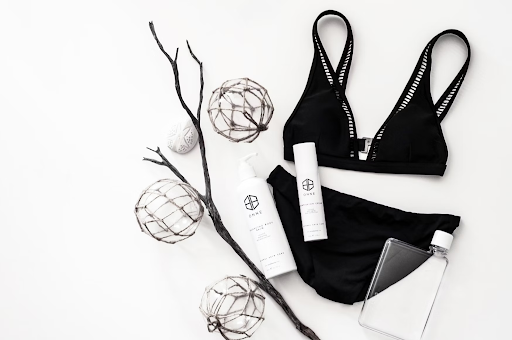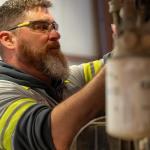As the world moves towards more environmentally-conscious choices, sustainability has increasingly become a priority across all industries. From fashion to food, people are becoming more aware of the environmental impact of their purchases.
The lingerie industry, long associated with luxurious fabrics and intricate designs, is no exception. In 2025, sustainable lingerie is not just a trend—it’s a necessity.
Consumers are demanding better, eco-friendly options, and brands are responding with innovative materials, ethical production practices, and a commitment to reducing waste.
In this article, we’ll explore why sustainable lingerie matters in 2025, how it impacts both the planet and the people who wear it, and highlight how brands like Triumph are leading the way.
The Environmental Impact of Traditional Lingerie
The lingerie industry has long relied on materials like nylon, polyester, and lace, many of which are made from non-renewable resources and involve energy-intensive processes.
These fabrics are not only difficult to recycle but also contribute to plastic waste in landfills. According to a study by the Ellen MacArthur Foundation, fashion industry waste (including lingerie) contributes significantly to global pollution, with textiles accounting for nearly 92 million tons of waste every year.
The environmental toll of traditional lingerie manufacturing has prompted the industry to rethink how it operates. Opting for sustainable materials and production methods can significantly reduce the carbon footprint of the lingerie sector.
One of the brands that has embraced sustainability in its lingerie designs is Triumph. Known for its commitment to comfort, innovation, and quality, Triumph bra incorporates sustainable materials like recycled fabrics, organic cotton, and eco-friendly dyes into their collections.
Sustainable Fabrics: Natural, Recycled, and Organic Materials
Sustainability in lingerie starts with the materials used to create it. Thankfully, innovations in fabric production have made it easier than ever to create beautiful lingerie without compromising the planet.
In 2025, sustainable fabrics like organic cotton, hemp, bamboo, and Tencel are becoming increasingly popular. These fabrics are biodegradable, require less water to produce, and are free from harmful pesticides.
In addition to natural fabrics, recycled materials like recycled polyester are gaining traction. Brands are turning old plastic bottles and discarded fabrics into soft, durable materials that can be used for bras, panties, and sleepwear. Not only does this reduce waste, but it also conserves natural resources.
Ethical Production Practices: Fair Labor and Transparency
Sustainability goes beyond just materials. It encompasses the entire supply chain, from the sourcing of raw materials to the treatment of workers in factories. Many traditional lingerie brands have been criticized for their lack of transparency and poor working conditions in garment factories.
In contrast, many sustainable lingerie brands are committing to ethical production—prioritizing fair wages, safe working conditions, and respect for human rights.
In 2025, more and more consumers are looking for transparency in the brands they support. Ethical lingerie brands provide information on where and how their garments are made, and many even work with local artisans and small-scale manufacturers to ensure the sustainability of their operations.
Supporting lingerie brands with ethical production practices ensures that workers are treated fairly and that the supply chain is as transparent as possible, fostering a more responsible and just industry.
Longevity: High-Quality, Timeless Lingerie That Lasts
A major aspect of sustainability is durability. Fast fashion, with its low-cost, disposable nature, has been a major contributor to the environmental crisis. However, in the world of lingerie, quality is often key.
Brands focusing on sustainability are designing lingerie pieces built to last longer, offering high-quality craftsmanship and fabrics that stand the test of time.
By investing in lingerie that’s made to endure, consumers can reduce the need to frequently replace pieces. Sustainable lingerie often features timeless designs and classic styles, meaning they can be worn for years without losing their shape or color.
A focus on longevity helps combat the cycle of cheap, disposable fashion and encourages consumers to make more thoughtful, long-lasting purchases.
The Health and Comfort Factor: Skin-Friendly Materials
Another important aspect of sustainable lingerie is the use of natural, skin-friendly materials that reduce the risk of irritation or allergic reactions. Traditional lingerie fabrics are often treated with toxic chemicals during manufacturing, which can be absorbed by the skin over time.
Sustainable lingerie brands use organic cotton, bamboo, and Tencel, all of which are not only eco-friendly but also gentle on the skin, offering comfort without compromising on style.
These materials are naturally breathable, reducing the chances of skin irritation and discomfort, particularly in sensitive areas.
As more people are becoming aware of the health risks of synthetic fabrics, sustainable lingerie offers a healthier alternative that nurtures both the environment and the body.
The Consumer Demand for Change
In 2025, consumer demand for sustainable products is stronger than ever before. As awareness of climate change, plastic pollution, and waste management grows, consumers are more inclined to support brands that align with their values.
The lingerie market is no different. As more people choose eco-friendly options, the demand for sustainable lingerie will continue to rise, pushing the industry towards further innovation.
Brands like Triumph, and IFG are listening to consumers and responding with more sustainable collections. This shift is not only positive for the environment but also for the people who wear it.
Consumer power has the potential to drive industry-wide change, and as more people demand sustainable lingerie, brands will be forced to adapt to meet these expectations.
Final Thoughts
In 2025, sustainable lingerie is no longer a niche; it’s becoming an industry standard. From eco-friendly materials and ethical production practices to lasting quality and comfort, sustainable lingerie is reshaping the way we think about intimate wear.
Brands like Triumph are leading the charge, showing that it’s possible to combine luxury, comfort, and style with eco-conscious choices.
As consumers, it’s essential to recognize the importance of these changes and make informed choices that benefit both our planet and our personal well-being.



